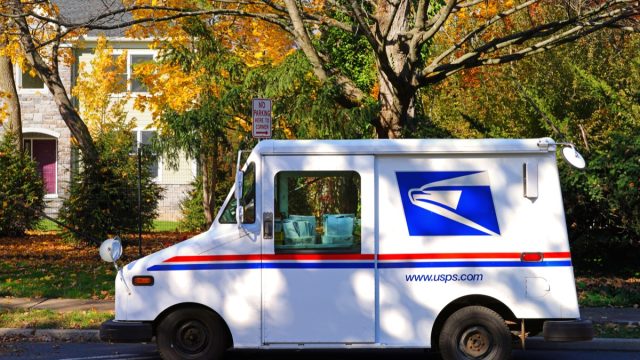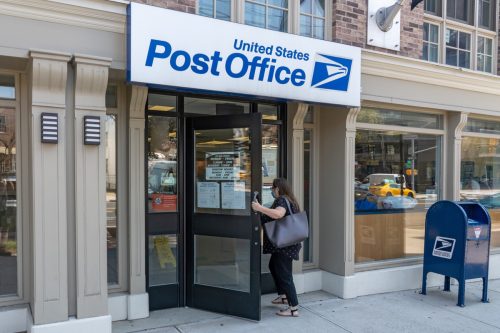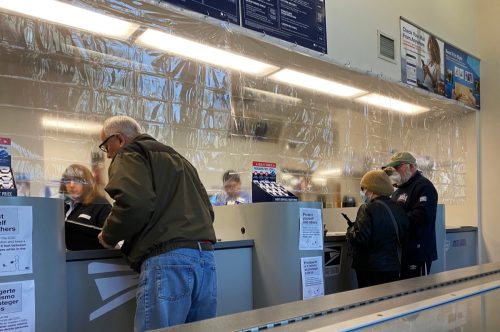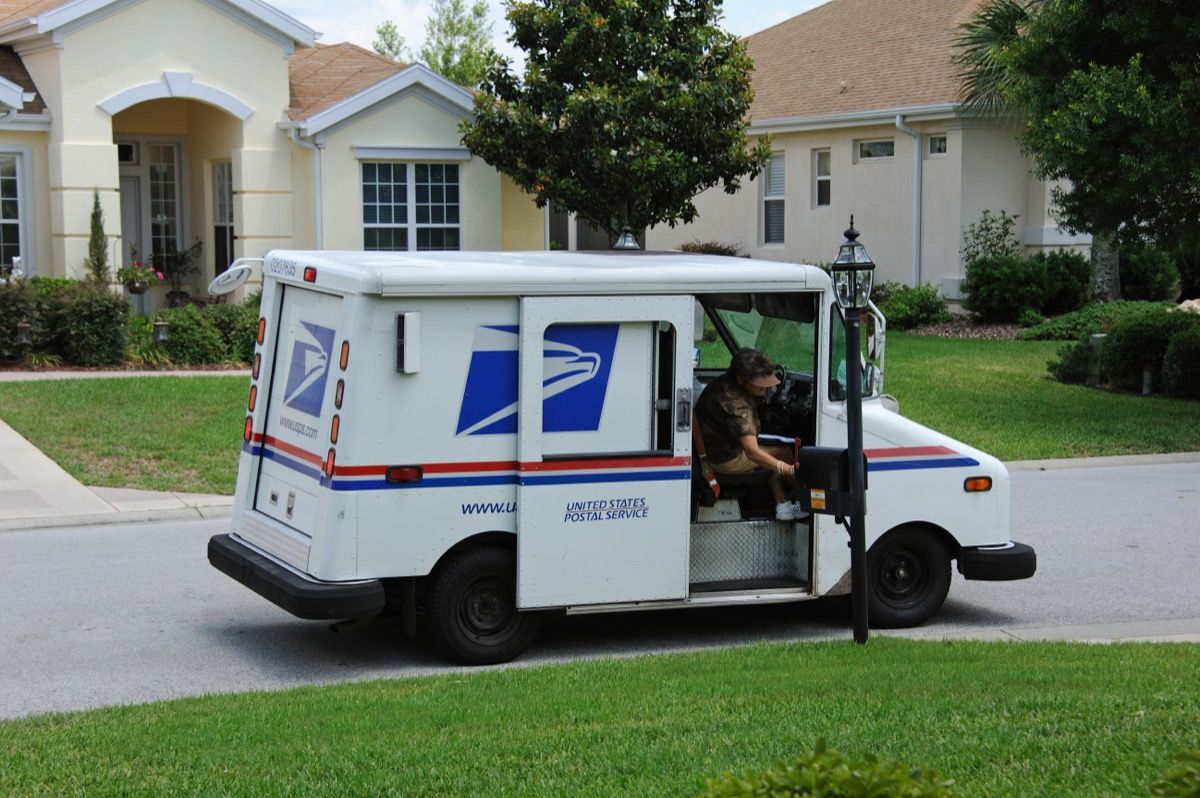USPS Is Making This Major Service Change, Starting July 10

There’s a lot that goes into sending mail and packages around the country, and we rely on the U.S. Postal Service (USPS) to figure out how to do the heavy lifting. It’s hardly a simple task, and with staffing shortages, budget cuts, and ongoing problems from the COVID pandemic, the job has only become harder. As a result, the Postal Service has been constantly adjusting its services over the past few years to try and minimize these issues falling back on the consumer. Now, the USPS has just announced yet another major change set to take place this year. Read on to find out what service adjustment to brace yourself for in July.
READ THIS NEXT: USPS Just Issued This “Uncomfortable” New Warning to All Customers.
The USPS already announced that it’s raising prices in July.

Last month, it was revealed that the Postal Service is planning to raise some of its prices in 2022. The USPS filed notice with the Postal Regulatory Commission (PRC) on April 6, announcing that it would be raising First-Class Mail prices by 6.5 percent. The planned price hikes include increasing the cost of the First-Class Mail Forever stamp from 58 cents to 60 cents, as well as raising the cost of metered one-ounce letters from 53 cents to 57 cents, domestic postcards from 40 cents to 44 cents, and international one-ounce letters from $1.30 to $1.40. As long as this adjustment is “favorably reviewed by the PRC,” the new prices are set to take effect July 10.
But the agency is now getting ready to make another major change that month.

The Postal Service just announced a second change for the month of July. On May 9, the agency said that it is gearing up to adjust its shipping zones. According to the Shipping School, these zones are how the USPS determines the distance between an origin and destination address in miles. There are currently nine different zone ranges, with Zone 1 being anything shipped no more than 50 miles and Zone 8 being anything shipped 1,801 miles or more. Zone 9 is “designated for freely associated states,” which covers things shipped to U.S. territories.
“Separate from the filing, the Postal Service is also planning to update the way the distance between origin and destination ZIP Codes is calculated to determine zone assignment,” the USPS said. According to the agency, it will start using the distances between 3-digit ZIP Codes to determine zones rather than using the distance between origin and destination plants. This change is set to take effect on July 10 as well.
RELATED: For more up-to-date information, sign up for our daily newsletter.
This could force you to pay more to ship certain packages.

When it comes to determining how much you need to pay to ship certain items, the price hikes planned for July won’t be the only thing you’ll need to consider. According to the Shipping School, shipping zones determine the price of postage, as well as what mail class a package will be sent in. So the planned zone adjustment could also result in you having to pay more to ship packages to specific places.
“For instance, if the origin ZIP Code was on the far Eastern side of the origin plant and the destination ZIP Code was on the far Western side of the destination plant, then the price may go up one zone,” USPS spokesperson David Coleman explained to eCommerce Bytes.
But the Postal Service said it shouldn’t change the cost in most cases.

Fortunately, it appears that this particular price hike would be a rare occurrence. According to Coleman, the change is meant to “provide more stable zone calculations for our customers” and not an attempt by the USPS to raise prices for shippers again.
“In most instances, this will not make a difference in price because for most ZIP Code pairs the zone is not changing,” he told eCommerce Bytes. “For some 3-digit ZIP Code pairs, the zone will change, going either up or down. It depends on distance from the plant and the orientation between the plant and the ZIP Code.”
But Coleman also noted that there could be some instances in which this change would result in you having to pay less to ship items to specific places than before. “If the origin ZIP was on the far Western side of the origin plant and the destination ZIP Code was on the far Eastern side of the destination plant, then the price may go down a zone,” he explained, adding that the Domestic Mail Manuel (DMM)’s updated zone definition will provide more details on exact changes, and this will soon be published in the Federal Register.
READ THIS NEXT: All the Changes USPS Has Made to Your Mail This Year.